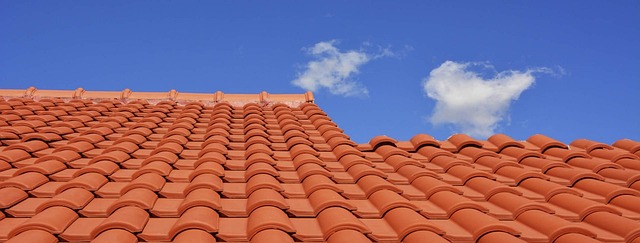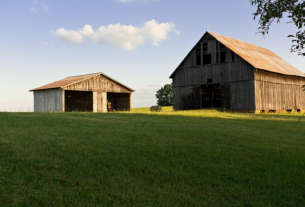Choosing the right roofing supplies is vital for structural integrity, energy efficiency, and aesthetics in both residential and commercial roofing. Homeowners should consider climate, style, and budget while selecting materials like asphalt shingles, metal roofing, or tile. Commercial roofs require low-maintenance solutions such as waterproof membranes, metal panels, and standing seam roofing to handle heavy loads and harsh conditions. Modern roofing supplies offer enhanced durability, impact resistance, and environmental benefits, with options like recycled content and cool-roof technology reducing utility bills and carbon footprints. Prioritizing longevity ensures roofs can withstand extreme weather and varying temperatures, while the growing trend of greener roofing supplies reflects a sustainable construction shift.
Roofing is a fundamental aspect of construction, offering protection from the elements and enhancing structural integrity. This comprehensive guide delves into the world of roofing supplies, catering to both residential and commercial needs. We explore diverse materials, from traditional asphalt to innovative green options, ensuring longevity and sustainability. Understanding the unique requirements of each setting guides selection, from residential aesthetics to commercial durability. Discover expert insights on choosing the right roofing supplies for every application.
- Understanding Roofing Materials for Different Applications
- Choosing the Right Roofing Supplies for Residential Properties
- Commercial Roofing: Specialized Materials and Installation Techniques
- Longevity and Durability: Factors to Consider in Roofing Supplies
- Green and Sustainable Options in Roofing Supplies
Understanding Roofing Materials for Different Applications
When it comes to roofing, the choice of materials plays a pivotal role in determining the longevity, aesthetics, and energy efficiency of a structure. For residential roofs, common choices include asphalt shingles, known for their affordability and ease of installation; metal roofing, which offers superior durability and resistance to extreme weather; and tile or slate, favored for their elegant appearance and long-lasting performance. Each material has unique properties that cater to specific needs like water resistance, noise reduction, and temperature regulation.
In the commercial sector, the landscape shifts towards more robust and low-maintenance options. Flat roofs often utilize waterproof membranes, such as EPDM or TPO, which are highly effective in preventing leaks. Metal panels and standing seam roofing are also popular due to their strength, versatility, and ability to withstand heavy loads. Additionally, green roofing systems, featuring plants and soil, gain traction for their environmental benefits, insulation properties, and extended roof lifespan. The selection of roofing supplies should align with local climates, architectural styles, and budget considerations to ensure optimal performance and value over time.
Choosing the Right Roofing Supplies for Residential Properties
When it comes to residential roofing, selecting the appropriate supplies is a meticulous task that requires careful consideration. Homeowners must evaluate their climate, architectural style, and budget while ensuring longevity and aesthetics. The right roofing supplies can make all the difference in terms of durability, energy efficiency, and the overall curb appeal of a residence. For instance, in snowy regions, choosing snow-resistant shingles or tiles is essential to prevent damage from heavy snowfall and ice accumulation.
Additionally, residential properties often benefit from eco-friendly roofing options. Supplies like recycled metal panels or asphalt shingles with cool-roof technology can significantly reduce energy consumption by reflecting sunlight, thereby lowering the interior temperature of the home. These choices not only contribute to environmental sustainability but also provide long-term savings on utility bills for homeowners.
Commercial Roofing: Specialized Materials and Installation Techniques
Commercial roofing demands specialized materials and installation techniques due to its unique challenges. Buildings like offices, warehouses, and malls are subject to heavy loads, frequent foot traffic, and harsh weather conditions. As such, commercial roofs require durable roofing supplies such as reinforced membranes, metal panels, and high-performance insulation. These materials not only withstand extreme conditions but also offer long-term protection against leaks and structural damage.
Installation techniques for commercial roofing often involve complex processes to ensure stability and longevity. Professional installers employ advanced methods including precise measurements, intricate fastening systems, and thorough sealing to create a robust barrier against the elements. This attention to detail is crucial for maintaining the integrity of the roof and the overall structure of the building, ensuring safety and comfort for occupants below.
Longevity and Durability: Factors to Consider in Roofing Supplies
When choosing roofing supplies, longevity and durability should be at the forefront of your considerations. The right materials can ensure your roof withstands the test of time, extreme weather conditions, and the constant exposure to varying temperatures and UV rays. Look for products that offer a high resistance to rust, corrosion, and fire, as these are key factors in prolonging the lifespan of your roof.
Several roofing supplies now incorporate advanced technologies and innovative designs to enhance their durability. For instance, modern shingles often come with enhanced impact resistance and improved aging properties compared to traditional options. Additionally, underlayments made from high-quality materials can provide an extra layer of protection against moisture, pests, and extreme weather events, thereby contributing to a more robust and long-lasting roof structure for both residential and commercial buildings.
Green and Sustainable Options in Roofing Supplies
In recent years, there’s been a growing trend towards greener and more sustainable roofing options. Traditional roofing materials often contribute to environmental issues due to their production methods and disposal. However, modern alternatives offer environmentally conscious solutions for both residential and commercial projects. One prominent choice is using recycled content roofing supplies, such as those made from rubber, plastic, or metal scraps. These not only reduce waste but also provide long-lasting durability.
Another sustainable approach involves selecting energy-efficient roofing options. Reflective or cool roofs, for instance, are designed to absorb less heat, thereby reducing the need for air conditioning and contributing to lower energy consumption. Additionally, choosing locally sourced roofing materials can minimize carbon footprints associated with transportation. This trend towards green roofing supplies not only benefits the environment but also offers long-term cost savings and improved building performance.
In conclusion, choosing the right roofing supplies is paramount for both residential and commercial projects. Understanding the unique requirements of each application, from weather resistance to structural integrity, guides selection. For homes, traditional materials offer comfort and aesthetics, while commercial roofs demand specialized solutions for heavier loads and extensive exposure. Longevity, durability, and sustainability are key considerations, with eco-friendly options gaining prominence in today’s market. By carefully evaluating these factors, property owners and managers can ensure robust, low-maintenance roofs that protect their investments for years to come.



